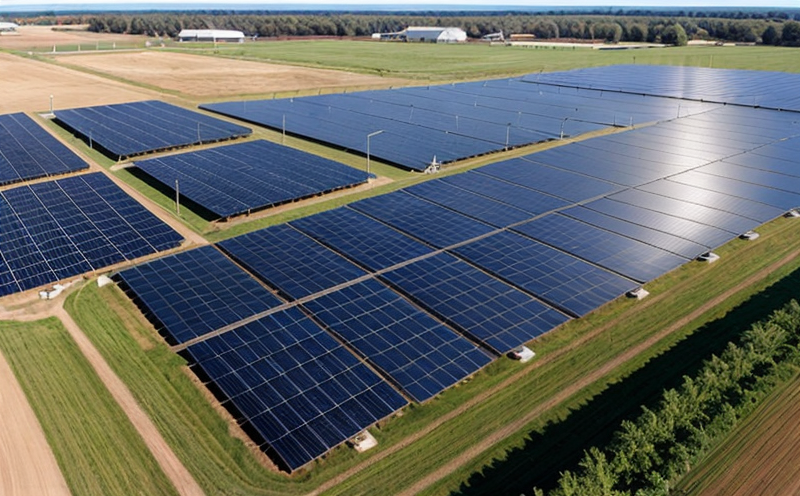IEC 60068 Environmental Durability Testing of New Energy Components
The IEC 60068 standard provides a robust framework for testing the environmental durability of new energy components. This service is critical for ensuring that renewable technologies meet stringent performance and safety requirements in diverse, often harsh environments.
At our laboratory, we utilize state-of-the-art equipment to simulate real-world conditions such as temperature cycling, humidity exposure, altitude changes, and mechanical stress. Our approach ensures that the components are tested under a range of environmental stresses to guarantee reliability and longevity.
The standard is widely recognized for its comprehensive coverage of various environmental factors that can affect the performance of new energy technologies. It includes testing parameters such as temperature cycling, humidity exposure, altitude changes, and mechanical stress, all of which are crucial in ensuring the robustness of renewable energy components.
Our team employs precise instrumentation to measure and monitor these conditions during each test cycle. This ensures that we can accurately assess how well a component withstands environmental stresses. The testing process is designed to mimic real-world conditions as closely as possible, providing valuable insights into potential vulnerabilities or strengths of the components.
Once the tests are completed, our laboratory generates comprehensive reports detailing the results of each test cycle. These reports include detailed analyses and recommendations for improvements where necessary. This not only helps in meeting regulatory requirements but also aids in continuous improvement through feedback loops within R&D processes.
The IEC 60068 standard is particularly important for industries focusing on emerging renewable technologies like solar, wind, and battery storage systems. By adhering to these standards early in the development process, manufacturers can identify potential issues before they become critical problems during deployment or operation.
Our laboratory uses advanced software tools to interpret test data, ensuring that every aspect of environmental durability is accounted for. This allows us to provide accurate and reliable testing results which are essential for making informed decisions about product design and manufacturing processes.
In summary, IEC 60068 environmental durability testing plays a pivotal role in validating the performance capabilities of new energy components across various environmental conditions. It helps manufacturers ensure compliance with international standards while also enhancing overall quality control measures within their production facilities.
Applied Standards
- IEC 60068-1: General Requirements for Environmental Testing of Electrical and Electronic Equipment
- IEC 60068-3: Dry Heat Tests
- IEC 60068-4: Temperature Cycling Tests
- IEC 60068-5: Humidity Tests (Alternating Wet and Dry)
- IEC 60068-9: Salt Spray Tests for Atmospheric Exposure
Customer Impact and Satisfaction
Implementing IEC 60068 environmental durability testing ensures that our clients achieve high-quality, reliable products that meet international standards. This not only enhances market confidence but also supports regulatory compliance and safety requirements.
- Improved Product Quality: Rigorous testing helps eliminate defects early in the production process, leading to higher product quality.
- Enhanced Safety Standards: By adhering to international standards, manufacturers can ensure their products meet stringent safety requirements.
- Increased Market Confidence: Compliance with recognized international standards boosts consumer trust and satisfaction.
Use Cases and Application Examples
- Solar Panel Manufacturers: Testing solar panels for temperature cycling ensures they can operate efficiently in varying climates.
- Battery Storage Systems: Simulating humidity exposure helps ensure the longevity of battery storage systems used in renewable energy projects.





